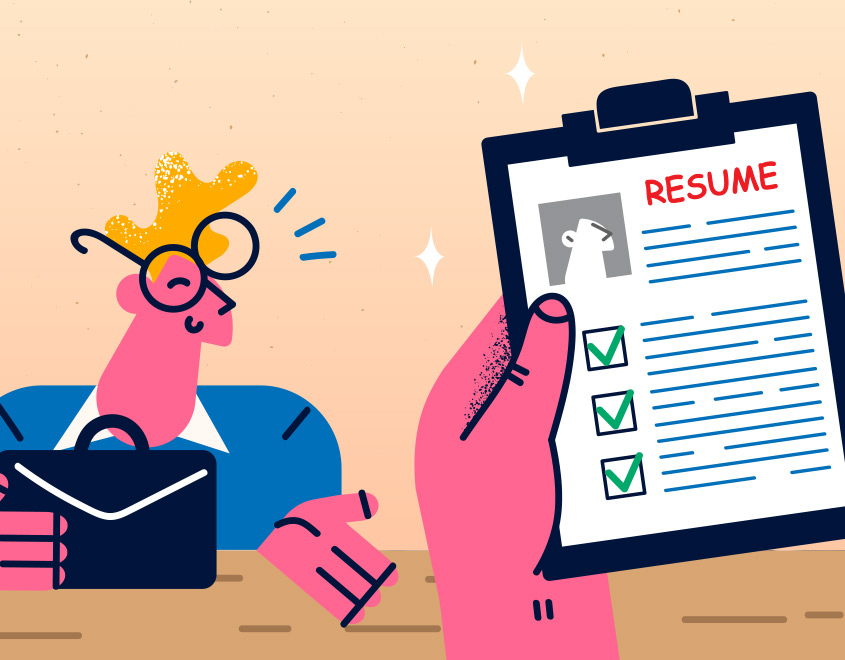
Introduction
Embarking on the journey of securing an internship in India is both fascinating and challenging. Aspiring interns invest considerable time and effort in crafting compelling applications, but the waiting period that follows can test their patience and resilience. In this insightful guide, we delve into the details of response times for internship applications, offering valuable insights and practical tips to help applicants navigate this critical phase with confidence.
Understanding the Internship Landscape
Before diving into response times, it’s essential to grasp the dynamics of the internship landscape. With a burgeoning economy and a vibrant startup ecosystem, India offers a lot of internship opportunities across various industries, including technology, finance, healthcare, and media. Internships serve as invaluable platforms for students and graduates to gain hands-on experience, explore career paths, and develop essential skills in a real-world setting.
Factors Influencing Response Times
Several factors contribute to the variability in response times for internship applications. Understanding these factors can offer insights into why some applicants receive prompt responses while others experience prolonged waiting periods:
1. Industry and Sector
Response times can vary significantly depending on the industry and sector of the internship. For instance, technology and e-commerce companies may have faster turnaround times compared to traditional sectors like government or manufacturing.
2. Company Size and Structure
The size and structure of the hiring organization play a crucial role in determining response times. Startups and small-to-medium enterprises (SMEs) may have more streamlined recruitment processes, leading to quicker responses, while larger corporations may have longer decision-making timelines.
3. Recruitment Cycle
Many companies follow structured recruitment cycles, with specific periods dedicated to hiring interns. Understanding these cycles can provide applicants with insights into when to expect responses and plan their applications accordingly.
4. Application Volume
The volume of applications received for a particular internship can influence response times. High-demand roles may require more time for recruiters to review applications and shortlist candidates.
5. Geographic Location
Response times may vary based on the geographic location of the hiring organization. Metropolitan cities like Mumbai, Delhi, Bangalore, and Hyderabad, known for their thriving business ecosystems, may have shorter response times compared to Tier-II or Tier-III cities.
6. Campus Placements and Internship Drives
Many companies conduct campus placements and internship drives at educational institutions, targeting specific batches of students. Response times for such drives may be relatively faster, as companies aim to finalize their internship selections within a specified timeframe.
7. Cultural Considerations
Cultural factors, such as communication norms and hierarchy within organizations, can also influence response times. In some cases, companies may prioritize face-to-face interactions or formal communication channels, leading to longer response times.
Average Response Times Across Stages
While response times can vary based on the factors mentioned above, certain patterns emerge across different stages of the internship application process:
Read More: 5 Ways to Maximize Internship Opportunities
1. Initial Application Submission
- Immediate Response: Some companies send automated email confirmations upon receiving internship applications, providing applicants with assurance that their submissions were successful.
- Typical Wait Time: Applicants can expect to wait anywhere from a few days to several weeks before receiving initial responses. However, silence during this period does not necessarily indicate rejection, as recruiters may be in the process of reviewing applications.
2. Screening and Interview Invitation
- Shortlisting Process: Recruiters review applications to shortlist candidates for interviews based on qualifications, skills, and fit with the organization’s culture.
- Typical Wait Time: Candidates may receive screening or interview invitations within two to four weeks after the application deadline, depending on the company’s recruitment timeline and volume of applications.
3. Interview Phase
- Interview Scheduling: After shortlisting candidates, recruiters schedule interviews, which may include phone screenings, video calls, or in-person meetings.
- Typical Wait Time: Candidates may wait one to three weeks between receiving interview invitations and the actual interview dates, depending on the availability of interviewers and the urgency of the hiring need.
4. Post-Interview Decision Making
- Evaluation Period: Following interviews, hiring managers assess candidates’ performance, review feedback, and make informed decisions.
- Typical Wait Time: Candidates often wait between one to four weeks to receive updates on their application status after interviews. However, some companies may expedite this process for urgent roles or time-sensitive projects.
5. Offer Stage
- Offer Preparation: Once a decision is made, employers prepare and extend internship offers to selected candidates.
- Typical Wait Time: Candidates may receive offers within one to three weeks after their final interviews. However, negotiations or administrative processes could extend this timeline slightly.
Navigating the Waiting Period: Strategies for Applicants
While waiting for responses can be challenging, applicants can adopt proactive strategies to manage the uncertainty and stay engaged throughout the process:
1. Follow Up Politely
After a reasonable period, consider following up with recruiters or hiring managers to inquire about the status of your application. Craft a polite and concise follow-up email expressing your continued interest in the internship opportunity.
2. Network Effectively
Leverage professional networking platforms like LinkedIn to connect with recruiters, alumni, and industry professionals. Engaging in meaningful conversations and building relationships can enhance your visibility and increase your chances of receiving timely responses.
3. Customize Applications
Tailor your internship applications to align with the specific requirements and preferences of each company. Highlight your relevant skills, experiences, and achievements to demonstrate your suitability for the role.
4. Stay Informed
Keep abreast of industry trends, company updates, and internship opportunities through online resources, industry publications, and career fairs. Being well-informed can help you target relevant opportunities and tailor your applications effectively.
5. Prepare for Interviews
Anticipate potential interview questions and prepare thoughtful responses that showcase your skills, experiences, and motivations. Practice mock interviews with friends, family members, or career counselors to refine your interview technique.
6. Stay Positive and Persistent
Maintain a positive mindset and stay resilient in the face of challenges or setbacks. Remember that the internship application process is inherently competitive, and rejection is a natural part of the journey. Use feedback constructively to improve your future applications and enhance your professional development.
Read More: A Guide To Internships For Students: Landing, Navigating, And Making The Most Of Them
Conclusion
Navigating the waiting period for internship applications requires patience, resilience, and strategic planning. By understanding the factors influencing response times, managing expectations, and adopting proactive strategies, applicants can optimize their chances of securing valuable internship opportunities and advancing their career goals. Remember that persistence, professionalism, and a positive attitude can make all the difference in this competitive landscape. So, embrace the journey, stay focused on your goals, and trust in your abilities to succeed in the dynamic world of internships.
FAQs
1. When should you follow up on an internship application?
As students, it’s important to give companies some breathing room after applying for an internship. Waiting for about one to two weeks before following up shows that we respect their process. If we haven’t heard back by then, a gentle follow-up email is a good idea. After an interview, a quick thank-you email within 24 hours not only shows gratitude but also keeps the conversation going. If they’ve given us a timeline, sticking to it while being persistent yet respectful is key.
2. Why am I not hearing back from internship applications?
Sometimes, not hearing back from internship applications can feel frustrating. There are several reasons for this silence. Perhaps the company received many applications and has not sifted through them all. It’s also possible they’ve already found someone or are exploring other candidates. Occasionally, errors in the application process or technical issues can cause communication gaps. Yet, reaching out politely and proactively might highlight the situation and present our willingness.
3. Is it normal to get rejected from internships?
Yes, experiencing rejection in internship applications is a common part of the journey. The competition can be tough, and each company has its own set of requirements. Remember, rejection doesn’t define your abilities or potential; it’s merely a stepping stone in the process. Take it as a chance to learn and develop, and continue exploring other opportunities. Persistence, adaptability, and maintaining a positive mindset are essential in navigating the internship search.
4. Do internships send rejection letters?
Not every internship sends out rejection letters, but quite a few companies make an effort to communicate their decision. This could be through emails, phone calls, or automated messages on the application platform. Yet, with the sheer number of applications they receive, some companies might not send individual rejections. If you’re left waiting, it is wise to follow up after a proper wait to gain clarity on your application status.
5. How do I ask about my internship application status?
When reaching out about your internship application status, consider a courteous and straightforward email. Start by thanking them for the chance to apply. Politely ask about your application status, specifying the position and submission date. Offer any extra information they may require and reaffirm your interest in the opportunity. This approach shows professionalism and enthusiasm while seeking clarity on your application’s tatus.





Social